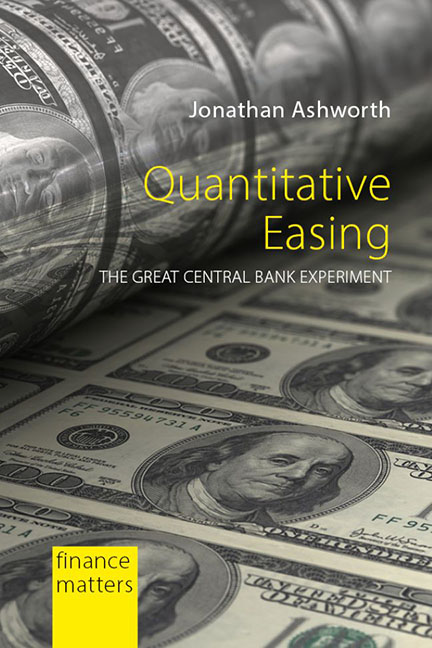Book contents
- Frontmatter
- Contents
- Preface and acknowledgements
- Abbreviations
- Foreword
- 1 Monetary policy-making since the end of Bretton Woods
- 2 Key monetary policy trends and events in the decades before the Great Financial Crisis
- 3 The Great Financial Crisis and the onset of quantitative easing
- 4 How quantitative easing works
- 5 Measuring the effectiveness and impact of quantitative easing
- 6 International spillovers of quantitative easing
- 7 Criticisms and negative externalities of quantitative easing
- 8 Exiting quantitative easing and policies for the next slowdown
- Conclusion
- Notes
- References
- Index
8 - Exiting quantitative easing and policies for the next slowdown
Published online by Cambridge University Press: 20 December 2023
- Frontmatter
- Contents
- Preface and acknowledgements
- Abbreviations
- Foreword
- 1 Monetary policy-making since the end of Bretton Woods
- 2 Key monetary policy trends and events in the decades before the Great Financial Crisis
- 3 The Great Financial Crisis and the onset of quantitative easing
- 4 How quantitative easing works
- 5 Measuring the effectiveness and impact of quantitative easing
- 6 International spillovers of quantitative easing
- 7 Criticisms and negative externalities of quantitative easing
- 8 Exiting quantitative easing and policies for the next slowdown
- Conclusion
- Notes
- References
- Index
Summary
Central bank commentary during the initial QE programmes regarding their eventual cessation amid economic recovery, typically focused on assurances to investors and the general public that they had the necessary tools to control any risks stemming from the huge growth in the liability side of their balance sheets. In particular, there were some fears that an economic recovery would encourage commercial banks to use their huge reserve balances to unduly expand lending, which would further increase activity and could fuel a jump in inflation and in inflation expectations. Fed officials noted that there would be some automatic shrinkage in reserve balances amid an economic recovery as its emergency lending programmes would no longer be needed. They also stressed that by moving to the “floor” system of paying interest on reserve balances (see Chapter 7), policy rates could be raised at the appropriate time, tempering the incentives of banks to make new loans. They also highlighted other new tools at their disposal to drain reserves from the banking system if necessary (Bernanke 2009a, 2009d, 2009c, 2009e; Kohn 2009).
An important consideration for policy-makers when contemplating the ending and ultimate reversal of their QE programmes was the debate (highlighted in Chapter 5) about whether “Stock” or “Flow” effects of asset purchases had the most powerful effect on financial markets. As a reminder, Stock effects are a persistent change in prices and yields of government bonds in response to permanent changes in the supply of bonds available to be purchased by private investors (with expectations of future changes in supply being discounted into prices and yields as soon as the QE programmes are announced), whereas Flow effects reflect changes in prices and yields in response to the actual ongoing purchases of government bonds by central banks (D’Amico& King 2011). The general consensus of financial market practitioners and policy-makers was that Stock effects were key, and academic research has generally supported this view. This was important as it suggested that significant stimulus would likely remain in place for a considerable period after the end of asset purchases and even when they were being reversed. In contrast, if Flow effects had dominated, there could have been a material tightening in financial conditions once QE ended and even more so when it ultimately went into reverse.
- Type
- Chapter
- Information
- Quantitative EasingThe Great Central Bank Experiment, pp. 135 - 146Publisher: Agenda PublishingPrint publication year: 2020



